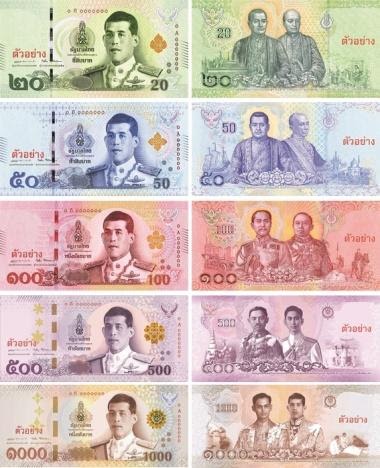The Barter System - Give and Take.
- The Inkonomics Blog
- Sep 10, 2020
- 5 min read
If you have ever swapped one of your chocolate with a friend in return for one of their ice- creams, you have bartered. Barter is an act of trading goods and services where two individuals negotiate to determine the relative value of their goods and offer them to one another in exchange. Clearly, money had no place in this system.

With the growth and expansion of the economy, many difficulties arose in this system, primarily being inefficient in the exchange mechanism. Firstly, the lack of double coincidence of wants came out as a major problem in the economy where simultaneous satisfaction of mutual wants was proving to be difficult. It turned out to be laborious, time consuming and costly in terms of time spent in searching for the right person and satisfactory exchange. Secondly, there was an absence of common measure of value, where it was difficult to find a fixed ratio for exchanging goods and services. Say for example people didn’t know the amount of rice to be exchanged to get one kilo of wheat . Third, there was difficulty in storage of goods as the commodities may become obsolete or deteriorate in value. This happens especially in case of perishable goods. And lastly, one of the most important drawbacks of barter system is that there is a lack of standard of deferred payment, which means it does not provide a satisfactory unit in terms of which contracts about future payments can be written. Thus facilitating only on the spot payments.
Although barter systems may have functioned well in the past, a financial system with monetary currency was much needed keeping in mind the difficulties being faced and also it proved to be much more effective and efficient. Money - in the form of currency and coins - came into existence to overcome the limitations of the barter system. Money is the pivot around which all economic activities revolve. Money provides a common medium of exchange and a measure and store of value as we express value of every commodity in the form of money. Money occupies a central place in the economy and truly the quote “money makes the mare go” holds true in a modern economy.
Evolution of Currency
Currency - representing wealth, a means to an end, and much more has undergone a long, storied evolution that can be traced back to the origins of human civilization itself. The use of currency is intertwined with the history of money, which by its most common definition is a standardized means of exchanging goods and services.
● Immediately following the end of the barter system, kingdoms began using widely accessible materials as a form of standardized currency. In 1200 B.C., cowrie shells were used as money in the Pacific, in China and some parts of Africa, while in other countries animal skins were the used as they were more extensively available.
● Soon after, as metals were mined in larger quantities, kingdoms began using them to make their own, distinctive currency. A good example was China, who, in 1000 B.C., began making cowries using copper and bronze.
● Coins as a form of currency began to gain more and more attention, and in 500 B.C. in Lydia (Turkey), coins were made using a mixture of gold and silver. The back of the coin was stamped, and as they were made with precious materials, it had significant value. Thus began the system of using different materials to indicate higher values.
● The coin kept its value for about 1300 years, but in 806 A.D., paper money started to appear in China because of shortages in copper.
● During the 1600s, banknotes were introduced in England. These banknotes were made by creating a reserve of gold. In 1816, gold became the standard of value in England. The first bank in Europe to issue printed money was Swedish Stockholm Bank in 1661.
● In 1900, the Gold Standard Act was enacted in America, which led to the creation of a Central Bank. However, by the end of the Great Depression in the 1930s, the gold standard was dropped, due to its dropping value.
● In 1933 the U.S. abandoned the gold standard, and completely removed the link between the dollar and gold in 1971, now the USD value is not linked to any specific asset.
From then up until the present day, paper money continues to be the standard form of money. However, an equally popular mode of payment, i.e. credit cards, began to make its mark in the 1960s. Credit cards remain prevalent today, and many countries, especially developing nations, are still growing in credit card usage. Developed nations, on the other hand, are moving towards digital wallets and other digital payment platforms in their quest for a cashless society.
MEME CORNER
History of Currency in India
Indian Currency in the Early Period
Formal currency in India dates back to the 6th - 7th century in the Mahajan Kingdom where coins were minted in various irregular shapes with distinct prints on them. Similar systems were also found in Saurashtra, Dakshin Panchal and Magadha kingdoms.
The Mauryan rule brought with it a system of stamped metallic bars. Often, the engraving or the stamp on the bars showed either a ruler of the period or a religious or cultural reference. For example, the Kushans had coins of mythological deities as an influence of Indo-Greek traditions.The rule of Turkish and Mughal Sultanate in the 12th Century AD saw a departure from the imprint of Indian kings and introduced coins having Islamic calligraphy and portraits of rulers. The Mughals introduced the system of ‘Tankas’ -high valued coins, ‘Jitters’ - lesser valued coins and ‘Rupees.’The Mughal currency remained Prevalent even during the British Rule until Mughal ruler Farrukhsiyar gave permission to British to mint Mughal coins in 1717.
Indian Currency During the British Era
Paper money was gaining popularity during 1770-1832 in various financial institutions like Bank of Hindoostan and General Bank of Bengal. With the Coinage Act, 1835 and British occupying the Princely states; there was uniform and standardized circulation of currency having portraits of the British monarch throughout India. This policy continued until 1935 when Reserve Bank of India was set up and given the authority to print currency.
Indian Currency Post Independence
After gaining independence from the British (1947-1950), the Government of India started using the Ashoka emblem on paper notes and coins instead of British monarchs. In 1996 this was replaced with the image of the Father of the Nation Mahatma Gandhi and the parliament.
Recently, demonetization took place on 26th November 2016 and new notes were introduced in the country.
Cryptocurrency
Digitalization has revolutionized this globe of ours and made the world flatter than ever. One of the features, which is quite intriguing, born out of this digital milieu is the cryptocurrency. Crypto-currencies are an internet-based medium of exchange that uses the cryptographical functions to conduct financial transactions. They leverage the block-chain technology to gain decentralization, transparency, and immutability.
Cryptocurrency is Irreversible, Pseudonymous, Fast, Global, and Secure. The properties made it conducive to be established and used by people. The transaction cannot be reversed once it’s confirmed in this platform. Not even the “PRESIDENT” of the USA can reverse his transaction. There are no security protocols involved while making payments through cryptocurrencies. The real-world identities are not disclosed as neither the transactions nor the accounts are connected to it. The receipt hence receives Bitcoins on so-called ‘addresses’. A good way to give a surprise party to your friend with a slight twist of him anticipating and suspense. Jokes apart, although, it is possible to analyze the transaction flow, it is not necessarily possible to connect the real-world identities of users with those addresses.
The transactions are propagated instantly on this network and are confirmed within a few minutes. Since they occur on a global network of computers, they are completely indifferent to the physical location of the payer. The funds are locked in a public key cryptography system to secure. Only the owner of the private key can send payments through cryptocurrencies. Strong cryptography or even the magic of big numbers makes it impossible to break this scheme.



















Comments